Topics
Category
Era
Oakland Cemetery, St. Paul
Founded in 1853, Oakland is Minnesota’s oldest public cemetery and a gathering place, in death, of people from the full range of St. Paul history, from the city's founders to recent immigrants. It is also a place of beauty.
In 1850, when St. Paul was a muddy frontier hamlet, newspaper editor James Goodhue urged the creation of a public burial ground. Eventually, he reasoned, even the longest-lived local citizens would need an appropriate resting place. The town at the time had a few church bone yards but no place for the differently churched, the unchurched, paupers, and visitors to be buried.
Spurred by such admonitions and civic pride, some of Minnesota’s early worthies—among them Alexander Ramsey—founded the Oakland Cemetery Association in 1853. They then bought “forty acres of rolling oak grove two miles from the river landing.” Over time, that grove came to be surrounded by city. In the twenty-first century it lies bounded by Magnolia Avenue on the north, Sycamore Street on the south, Sylvan Street on the west, and Jackson Street on the east, in the North End neighborhood. Later purchases expanded it to one hundred acres.
The first burial plots sold for fifteen cents a square foot or $3.15 for the standard seven-by-three unit. The city and county bought a tract each to accommodate the graves of the destitute. The first burials took place in 1853.
War tends to fill cemeteries, and Oakland has been no exception. Andrew Myrick, the Indian trader sometimes blamed for setting off the U.S.–Dakota War of 1862, was buried there, as were many Civil War casualties. One small portion of Oakland has come to be known as “Soldiers’ Rest” for its rows of military headstones. Some 1500 to 2000 veterans are believed to lie in the cemetery, including Civil War Medal of Honor winner Marshall Sherman.
Many of St. Paul’s founders and early magnates have their final resting place in Oakland. They include governors Sibley and Ramsey; pioneer settler Augustus Larpenteur; teacher Harriet Bishop; philanthropist Amherst Wilder; and the merchant families of William Schurmeier, Charles Foote, and William Lindeke. Some of these chose plots on high ground near Oakland’s northwest corner. They now share this space with hundreds of Hmong immigrants.
Apart from a Romanian section along Jackson Street and Russian and Chinese zones along the north border there are no ethnic divisions in Oakland. The headstone of Thomas Lyles, a prominent African American businessman of the nineteenth century, has for its nearest neighbors stones marked Roth, Stein, and Blomberg. German surnames are prominent throughout the cemetery.
In 1873 the cemetery association hired the landscape architect Horace Cleveland to design the grounds. Cleveland, then based in Chicago, is considered one of the great American landscape architects of the nineteenth century. His influence on the Twin Cities has been enduring. In addition to Oakland he designed St. Paul’s St. Anthony Park neighborhood, the University of Minnesota’s main campus, several parks in the Minneapolis system, and its “grand rounds” network of parks, paths, and drives. (He is buried in Lakewood Cemetery, Minneapolis, which he did not design.) At Oakland one can see his handiwork with few later alterations.
Oakland partakes of the “garden” school of cemetery design, which treats the grounds like a formal park. Curving roads take advantage of the rolling, wooded, natural terrain. Like many old cemeteries of this tradition, Oakland offers the visitor a history of memorial marker styles. They range from the now-eroded sandstone of the early, humble burials to the marble and gray granite mausoleums of the wealthy (including 3M founder Archibald Bush) to the portrait-bearing black granite favored by many Hmong families. Its most famous monument is the tribute to fallen firefighters that stands at the southeast point of Soldiers’ Rest.
In the twenty-first century, Oakland remains what it has been since 1853: a public, non-sectarian, nonprofit cemetery open to all.
Bibliography
Baker, Robert Orr. “Oakland Cemetery: ‘A Safe and Permanent Resting Place.’” Ramsey County History 16, no. 1 (1980): 3–22.
Hill, Patrick M. “Like the Wind…Oakland Cemetery Holds Many Caught Up In the U.S.-Dakota War.” Ramsey County History 47, no. 2 (Summer 2012): 14–21.
Andrews, General C.C., ed. History of St. Paul, Minn. Syracuse, NY: D. Mason, 1890.
The Cultural Landscape Foundation. Oakland Cemetery-MN.
https://tclf.org/landscapes/oakland-cemetery-mn
St. Paul’s Historic Oakland Cemetery. History.
http://oaklandcemeterymn.com/
Related Resources
Primary
Oakland Cemetery: An Oakland Tour. [St. Paul: Oakland Cemetery Association, 1990?].
Oakland Cemetery Association. Annual Report of the Trustees to the Lot Ownwers. N.p.: 1891, 1892, 1894, 1895, 1899, 1906–1912, 1917–1920.
——— . Articles of Association, By Laws and Rules and Regulations for the Government of Oakland Cemetery. St. Paul: Pioneer Printing Company, 1863, 1876.
——— . Articles of Association of Oakland Cemetery With the Revised By-Laws and Rules. St. Paul: N.p., 1901, 1905.
——— . Articles of Association of Oakland Cemetery With the Revised By-Laws, Rules and Regulations. St. Paul: Pioneer Press Company, 1889.
——— . Oakland Cemetery Association, Funded A. D. 1853. St. Paul: N.p., 1922.
P812
Oakland Cemetery Association Records, 1853–1962
Manuscript Collection, Minnesota Historical Society, St. Paul
Description: Correspondence, lists of internments, reports and financial records of the Oakland Cemetery in St. Paul.
Oakland Cemetery Records. Vols. 1–5. St. Paul: Minnesota Genealogical Society, 1991.
Secondary
Lindeke, Chip. “St. Paul’s Oakland Cemetery and its First 150 Years: Pioneers, Politicians, the Public Share These Grounds.” Ramsey County History 38, 1 (Spring 2003): 18.
Osteen, Mame. Haven in the Heart of the City: the History of Lakewood Cemetery. Minneapolis: Lakewood Cemetery, 1992.
Pathways to the Past. [St. Paul: Friends of Oakland Cemetery 1980?].
Report on Examination, Oakland Cemetery Association, Saint Paul, Minnesota. [St. Paul: Wilkerson Guthmann and Johnson, Certified Public Accountants, 1966?].
Within These Gates. [St. Paul: Oakland Cemetery Association, 1949?].
Related Images
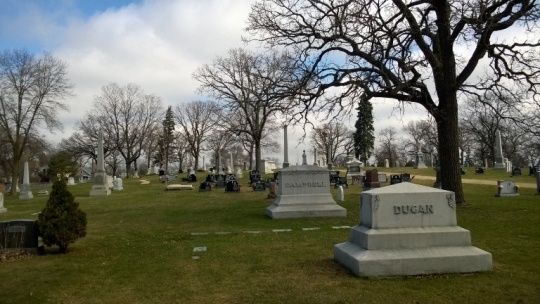
Oakland Cemetery, St. Paul
All rights reserved
Holding Location
Articles

Alexander Ramsey monument
All rights reserved
Holding Location
Articles
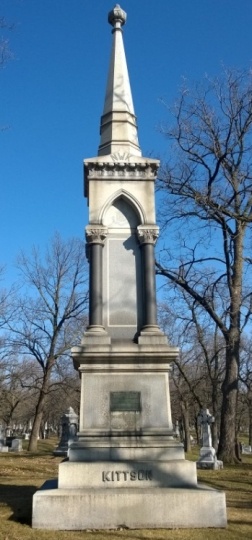
Norman Kittson monument
All rights reserved
Holding Location
Articles

Thomas Lyles monument
All rights reserved
Holding Location
Articles
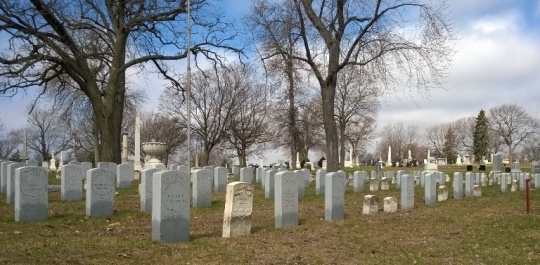
Soldiers’ Rest
All rights reserved
Holding Location
Articles
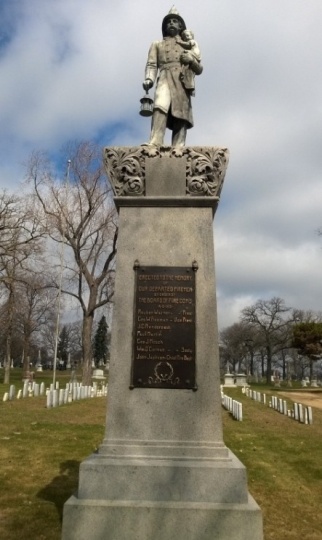
Firefighter monument
All rights reserved
Holding Location
Articles
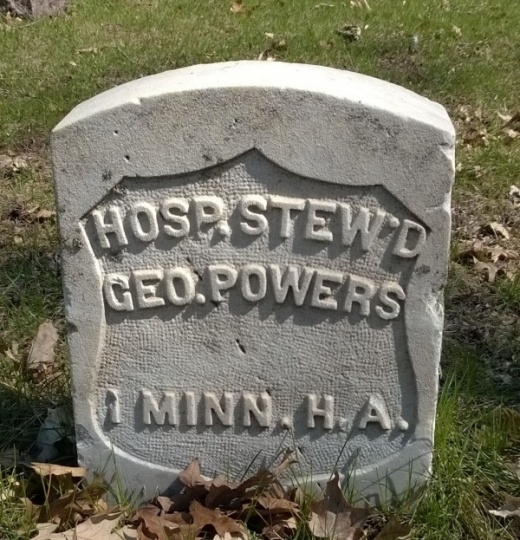
George Powers monument
All rights reserved
Holding Location
Articles
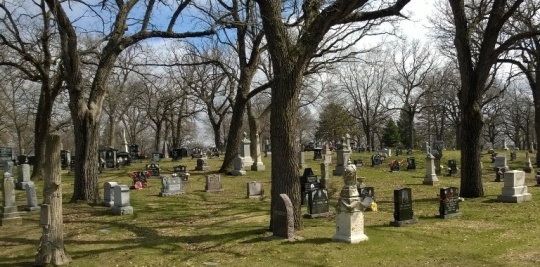
Hmong graves at Oakland Cemetery, St. Paul
All rights reserved
Holding Location
Articles
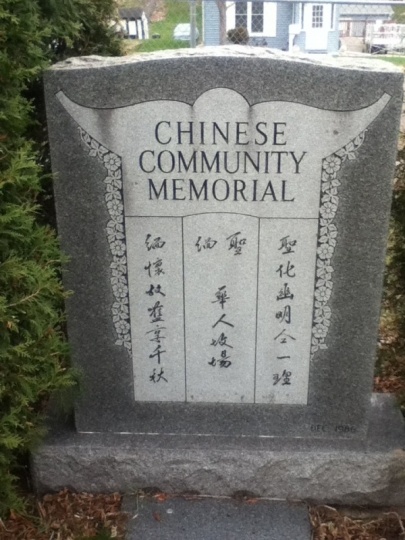
Chinese community memorial
All rights reserved
Holding Location
Articles
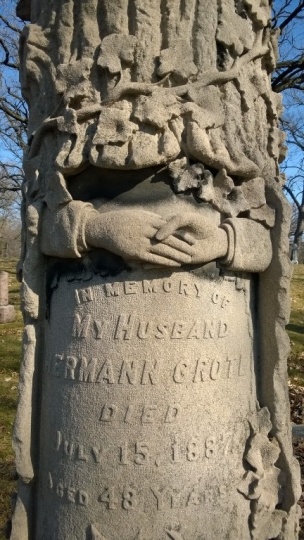
Clasped hands marker
All rights reserved
Holding Location
Articles

Child’s grave marker
All rights reserved
Holding Location
Articles
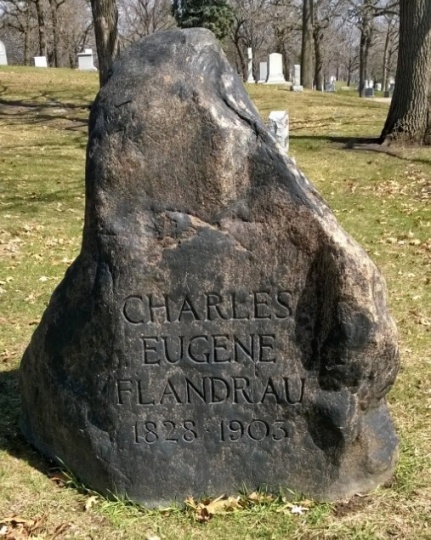
Charles Flandrau monument
All rights reserved
Holding Location
Articles
Related Articles
Turning Point
In 1873 landscape architect Horace Cleveland takes on the design of the Oakland grounds.
Chronology
1850
1851
1852
June 24, 1853
1853
1864
1869
1873
1875
1891
1892
1904
1938
1970
Bibliography
Baker, Robert Orr. “Oakland Cemetery: ‘A Safe and Permanent Resting Place.’” Ramsey County History 16, no. 1 (1980): 3–22.
Hill, Patrick M. “Like the Wind…Oakland Cemetery Holds Many Caught Up In the U.S.-Dakota War.” Ramsey County History 47, no. 2 (Summer 2012): 14–21.
Andrews, General C.C., ed. History of St. Paul, Minn. Syracuse, NY: D. Mason, 1890.
The Cultural Landscape Foundation. Oakland Cemetery-MN.
https://tclf.org/landscapes/oakland-cemetery-mn
St. Paul’s Historic Oakland Cemetery. History.
http://oaklandcemeterymn.com/
Related Resources
Primary
Oakland Cemetery: An Oakland Tour. [St. Paul: Oakland Cemetery Association, 1990?].
Oakland Cemetery Association. Annual Report of the Trustees to the Lot Ownwers. N.p.: 1891, 1892, 1894, 1895, 1899, 1906–1912, 1917–1920.
——— . Articles of Association, By Laws and Rules and Regulations for the Government of Oakland Cemetery. St. Paul: Pioneer Printing Company, 1863, 1876.
——— . Articles of Association of Oakland Cemetery With the Revised By-Laws and Rules. St. Paul: N.p., 1901, 1905.
——— . Articles of Association of Oakland Cemetery With the Revised By-Laws, Rules and Regulations. St. Paul: Pioneer Press Company, 1889.
——— . Oakland Cemetery Association, Funded A. D. 1853. St. Paul: N.p., 1922.
P812
Oakland Cemetery Association Records, 1853–1962
Manuscript Collection, Minnesota Historical Society, St. Paul
Description: Correspondence, lists of internments, reports and financial records of the Oakland Cemetery in St. Paul.
Oakland Cemetery Records. Vols. 1–5. St. Paul: Minnesota Genealogical Society, 1991.
Secondary
Lindeke, Chip. “St. Paul’s Oakland Cemetery and its First 150 Years: Pioneers, Politicians, the Public Share These Grounds.” Ramsey County History 38, 1 (Spring 2003): 18.
Osteen, Mame. Haven in the Heart of the City: the History of Lakewood Cemetery. Minneapolis: Lakewood Cemetery, 1992.
Pathways to the Past. [St. Paul: Friends of Oakland Cemetery 1980?].
Report on Examination, Oakland Cemetery Association, Saint Paul, Minnesota. [St. Paul: Wilkerson Guthmann and Johnson, Certified Public Accountants, 1966?].
Within These Gates. [St. Paul: Oakland Cemetery Association, 1949?].













